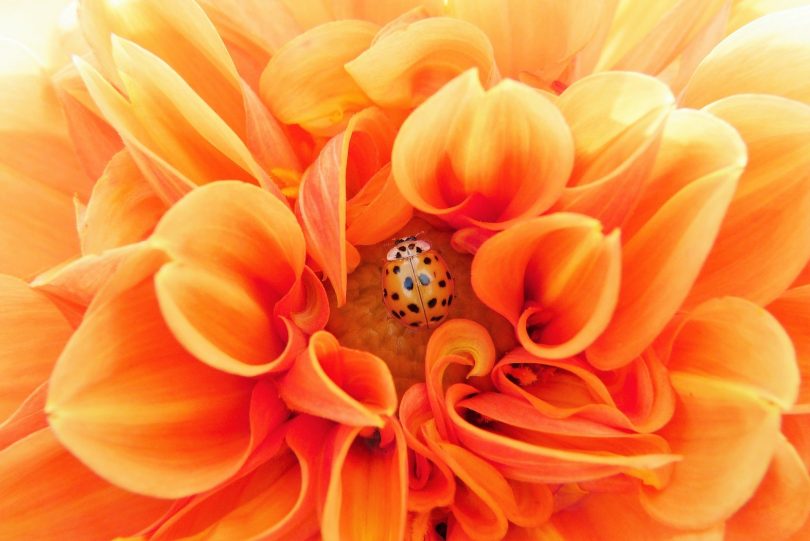In last week’s homage to The Good, The Bad, & The Ugly of cannabis pesticides, we looked at several chemicals with villainous tendencies, depraved dispositions, and flat-out rotten cores. Legitimate cannabis operators are prohibited from using such pesticides by the Environmental Protection Agency (EPA), but they do have options, namely chemicals that are not regulated by the EPA, are exempt from state/federal residue restrictions, or are registered for use that includes cannabis. [1] These we call the good. They are not, strictly speaking, outlaws. But they still bring loaded guns to the stand-off against cannabis pests.
The Good
These compounds make the lists of permitted/exempted pesticides for cannabis in California, Colorado, Washington, Nevada, and Oregon. They are not perfect and can still be harmful, but they are among the better alternatives for cannabis cultivators.
- Sulfur: a natural element, sulfur has doubled as an organic plant nutrient and plant defender since 1880. The primary use is as a fungicide against such unwelcome guests as powdery mildew and brown rot. It can also wipe out insects that include mites and thrips, but the University of Connecticut advises that sulfur should not be used in temperatures over 80° F; at high temperatures and dry conditions, sulfur can seccate plant tissue. Combination with horticultural oils is also dangerous to plants as the oils react with sulfur and cause damage.
According to the EPA, “Chronic exposure to elemental sulfur at low levels is generally recognized as safe,” and sulfur used appropriately does not generate “unreasonable adverse effects in the environment.” Nonetheless, sulfur must be thoroughly removed after application—contamination scars products with obvious organoleptic flaws.
- Neem Oil: Hailing from the humble neem tree, neem oil boasts more than 100 bioactive compounds, but the one that works the darkest magic against insects is the triterpene azadirachtin. [2] Azadirachtin is a contact pesticide that disrupts feeding, reproduction, and hormone function, leading to death. [2] Cannabis cultivators may target russet mites, two-spotted spider mites, and powdery mildew (among other possibilities) with neem oil. The EPA declares it safe and degradable but warns that it should not be disposed of in bodies of water. In aquatic environments, neem oil can be moderately toxic. Neem was traditionally used as a medicine. [2,3,] It may also serve as a soil amendment, decreasing nitrification and thus helping to maintain soil nitrogen levels. [3]
There are a few cases of neem oil poisoning, such as a suicide attempt and complete recovery after ingesting 250 ml (more than a cup) of neem oil pesticide. [4] Neem oil appears to have contraceptive effects and adverse consequences for reproduction. [5,6] However, these effects (namely inhibiting implantation) appear to be reversible. [5,6] The EPA acknowledges temporary, acute contraceptive potential, but cites a 1993 three-generation rat study [7] with chronic dietary neem oil that did not demonstrate any reproductive effects. The organization has, therefore, not updated its guidelines regarding the lack of tolerance residue requirements. Nonetheless, neem oil may pose harm to pregnant individuals. Neem extracts have been tested and confirmed on primates as agents of early-stage abortion. [8]
There are quite a few more options on the “good” list… even as “good” starts to seem relative. As such, we’re pushing this series to into chapter 3 next week. Stay tuned!
Main image: public domain
References
- Seltenrich, N. “Into the Weeds: Regulating Pesticides in Cannabis.” Environmental Health Perspectives, vol.127, no.4, 2019. Impact Factor: 8.05; Times Cited: 4 (ResearchGate)
- Campos, Estefânia VR, et al. “Neem Oil and Crop Protection: From Now to the Future.” Frontiers in Plant Science, vol. 7, 2016, p. 1494, https://www.frontiersin.org/article/10.3389/fpls.2016.01494. Impact Factor: 4.298; Times Cited: 35 (ResearchGate)
- Lokanadhan, S., et al. “Neem Products and Their Agricultural Applications.” Jbiopest, vol.5 (suppl.), 2012, pp.72-76. Impact Factor: 0.354; Times Cited: 70 (ResearchGate)
- Mishra, Ajay, and Nikhil Dave. “Neem Oil Poisoning: Case Report of an Adult with Toxic Encephalopathy.” Indian Journal of Critical Care Medicine, 17, no.5, 2013, pp. 321-2, doi:10.4103/0972-5229.120330. Impact Factor: 0.790, Times Cited: 5 (ResearchGate)
- National Research Council (US) Panel on Neem. “Appendix B, Breakthroughs in Population Control?” Neem: A Tree For Solving Global Problems. Washington (DC), National Academies Press (US), 1992, https://www.ncbi.nlm.nih.gov/books/NBK234639/.
- Chaube, Shail K, et al. “Neem (Azadirachta indica L.) Leaf Extract Deteriorates Oocyte Quality by Inducing ROS-Mediated Apoptosis in Mammals.” SpringerPlus,3, no. 464, 2014, doi:10.1186/2193-1801-3-464. Impact Factor: 1.776, Times Cited: 34 (ResearchGate)
- Chinnasamy, N, et al. “Toxicological Studies on Debitterized Neem Oil (Azadirachta indica).” Food and Chemical Toxicology, 31, no.4, 1993, pp.297–301,doi:10.1016/0278-6915(93)90079-e. Impact Factor: 3.775, Times Cited: 22 (ResearchGate)
- Talwar GP, et al. “Induced Termination of Pregnancy by Purified Extracts of Azadirachta Indica (Neem): Mechanisms Involved.” Am J Reprod Immunol, vol.37, no.6, pp.485-91. Impact Factor: 3.091, Times Cited: 30 (ResearchGate)








